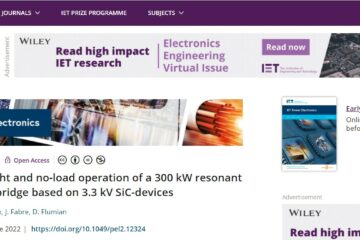Flexible and Efficient MMC Digital Twin Realized With Small-Scale Real-Time Simulators
by Stefan Milovanovic, Ignacio Polanco, Milan Utvic, and Drazen Dujic
Abstract:
The decreasing trend in the price of computational power has led to the evolution of various tools intended to support development processes in power electronics. In the domain of high-power converters, which rely on the use of digital controllers while switching at frequencies not exceeding several kHz, Hardware-In-the-Loop (HIL) systems have become widely adopted for commissioning and testing of control software. To put it differently, analog simulators or scaled-down versions of the same highpower converters have been replaced with HIL systems lately. Owing to the availability of computational power, HIL systems provide the means for high-fidelity real time simulations of the converter hardware parts. Connecting the dedicated controller, supposed to govern the hardware parts, to the Real-Time Simulator (RTS), through a suitable interface, gives control engineers the possibility to explore performances of various control algorithms without the controller ever realizing it drives the converter model, running on the employed RTS, instead of the real power hardware. Consequently, a risk-free environment for development and testing of control schemes is ensured, which is crucial especially if large and expensive systems, such as MW level power electronics converters, are considered. What is more, development of control algorithms and converter hardware parts can take place in parallel, as depicted in Figure 1, which reduces the development time of the converter as a whole.
Published in: IEEE Power Electronics Magazine ( Volume: 8, Issue: 2, June 2021)
Page(s): 24– 33
Date of Publication: 17 June 2021
Full paper available for download HERE.


